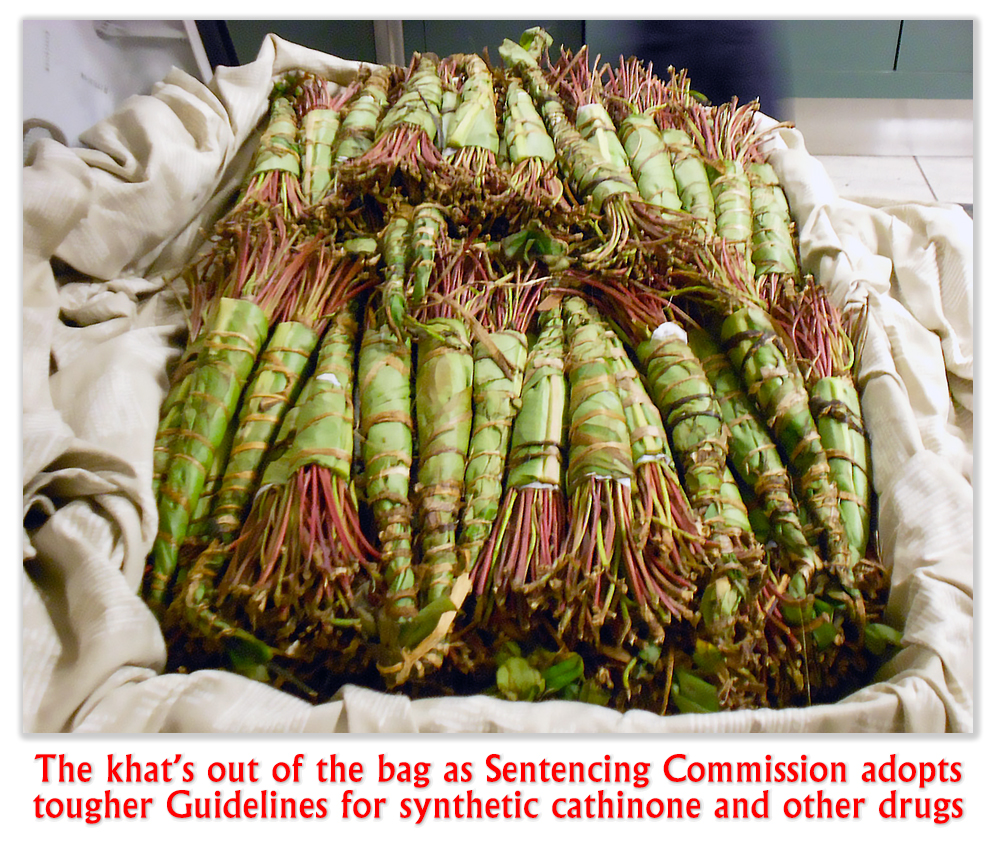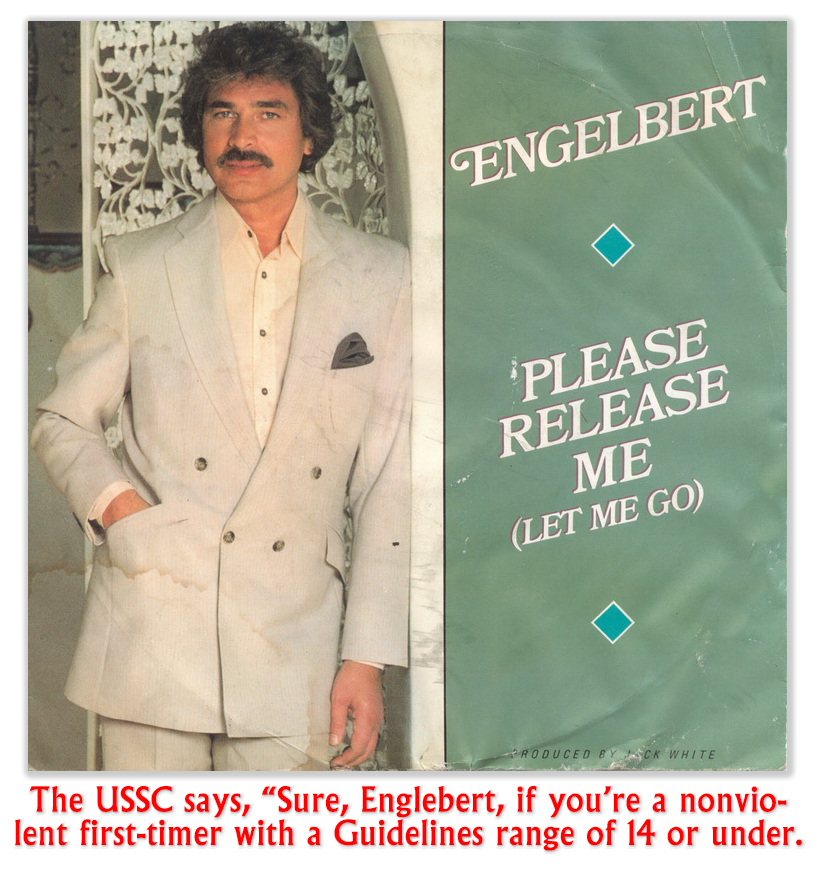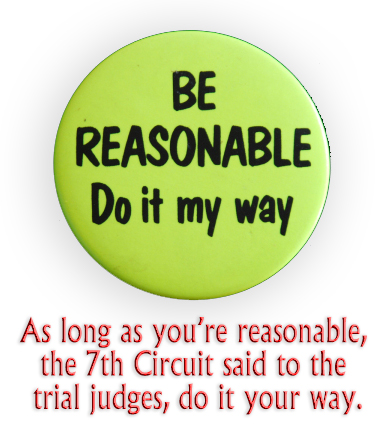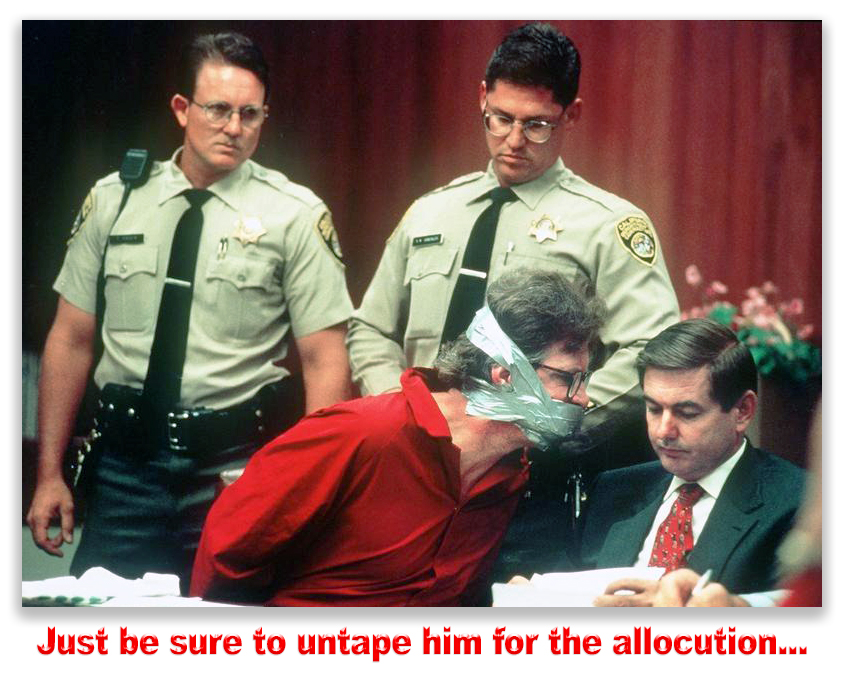We post news and comment on federal criminal justice issues, focused primarily on trial and post-conviction matters, legislative initiatives, and sentencing issues.

10TH CIRCUIT SAYS HOBBS ACT ROBBERY NOT A GUIDELINES “CRIME OF VIOLENCE”
 The debate over whether criminal offenses that any viewer of Law and Order would have no problem labeling as violent are in fact “crimes of violence” continues to rage. In the Newspeakean world that remains after United States v. Curtis Johnson and United States v. Mathis, determining whether a violent crime is a “crime of violence” has come to occupy the same station as counting the number of angels on the head of a pin.
The debate over whether criminal offenses that any viewer of Law and Order would have no problem labeling as violent are in fact “crimes of violence” continues to rage. In the Newspeakean world that remains after United States v. Curtis Johnson and United States v. Mathis, determining whether a violent crime is a “crime of violence” has come to occupy the same station as counting the number of angels on the head of a pin.
Whether a crime is a “crime of violence” has great relevance, because it can qualify the unlucky defendant for a 15-year mandatory minimum sentence (Armed Career Criminal Act), a mandatory consecutive sentence of at least five years (use of a firearm during crime of violence under 18 USC 924(c)), a much higher Guidelines sentencing range as a “career offender,” and a host of other statutory and Guidelines burdens. That’s not to mention the impact on legal residents subject to deportation for crimes of violence, an issue that is part of the Sessions and Dimaya case awaiting decision in the Supreme Court.
The latest entrant into the debate comes from the 10th Circuit, where Darnell O’Connor faced a Guidelines enhancement under USSG 2K2.1(a)(4)(A) because he had a prior conviction for a Hobbs Act robbery. Darnell’s advisory sentencing range for his felon-in-possession-of-a-gun conviction (18 USC 922(g)(11)) was increased by about six months because of the prior.
There are three ways a prior offense may be a crime of violence under the Guidelines. It may be either (1) an enumerated offense listed in the Guidelines (burglary, arson, extortion or use of explosive”); (2) an offense that has as an element the threatened use or actual use of physical force against a person; or (3) an offense that presents a significant risk of physical harm to others.
 The first clause is called the “enumerated clause,” because it enumerates certain offenses that count, period. The second is called the “force clause” or “elements clause,” because it relates to crimes that include elements of purposeful force. The third is called the “residual clause,” because it sweeps up what’s left. The “residual clause” was declared unconstitutionally vague two years ago in United States v. Johnson, at least as it applies to the ACCA, but the Supreme Court subsequently decided it could be applied in the Guidelines definition of “crime of violence.”
The first clause is called the “enumerated clause,” because it enumerates certain offenses that count, period. The second is called the “force clause” or “elements clause,” because it relates to crimes that include elements of purposeful force. The third is called the “residual clause,” because it sweeps up what’s left. The “residual clause” was declared unconstitutionally vague two years ago in United States v. Johnson, at least as it applies to the ACCA, but the Supreme Court subsequently decided it could be applied in the Guidelines definition of “crime of violence.”
The definition of a “crime of violence” is the same whether its figuring out whether someone is an armed career offender under the ACCA or whether figuring out whether it’s a crime a violence under 18 USC 16(b), or whether figuring out whether the Guidelines make one a “career offender” under the Guidelines.
 On appeal, Darnell argued that a Hobbs Act robbery was not a “crime of violence” under the Guidelines definition – which is fundamentally the same as the statutory definition – because it encompassed conduct that was broader than “robbery.” If some conduct that would be a crime under the statute would not be a “crime of violence” under the Guidelines, then any conviction under that statute will not qualify as a “crime of violence” for a sentence enhancement under the Guidelines, regardless of whether the conduct that led to the prior conviction was in fact violent.
On appeal, Darnell argued that a Hobbs Act robbery was not a “crime of violence” under the Guidelines definition – which is fundamentally the same as the statutory definition – because it encompassed conduct that was broader than “robbery.” If some conduct that would be a crime under the statute would not be a “crime of violence” under the Guidelines, then any conviction under that statute will not qualify as a “crime of violence” for a sentence enhancement under the Guidelines, regardless of whether the conduct that led to the prior conviction was in fact violent.
Under the force clause, the court looks at whether the statute underlying the prior conviction “has as an element the use, attempted use, or threatened use of physical force against the person of another.” If the statute criminalizes only conduct that fits within the force clause, then a sentencing enhancement is valid. But if the Hobbs Act robbery statute covers conduct that falls outside the force clause—such as threatening property rather than “the person of another”—then Hobbs Act robbery would not categorically be a crime of violence under that clause.
The Hobbs Act defines robbery is the unlawful taking of someone’s personal property against his will by use or threat of force “to his person or property.” The Government argued that the Court had to focus on the “minimum conduct” criminalized by the underlying statute without applying “legal imagination” to consider hypothetical situations that technically violate the law but have no “realistic probability” of falling within its application. It argued it Darnell could point to no case where the government would prosecute” threats to property as a Hobbs Act robbery.
The Court held that was immaterial, because Darnell “does not have to make that showing.

Hobbs Act robbery reaches conduct directed at “property” because the statute specifically says so. We cannot ignore the statutory text and construct a narrower statute than the plain language supports.” Because Hobbs Act robbery can be committed against property, where generic robbery cannot, it is broader than enumerated robbery, and cannot qualify as violent crime under the “enumerated clause.”
Likewise, the enumerated offense of extortion cannot include the Hobbs Act within its sweep, because the Guidelines now define extortion as being focused only on physical injury to a person. Hobbs Act extortion includes threats to property, and thus is too broad under that term as well.
Finally, the Court said, Hobbs Act robbery cannot qualify as a crime of violence under the Guidelines “force clause,” because Hobbs Act robbery can include force against property, while the “force clause” requires physical force against a person.
Darnell’s two prior Hobbs Act convictions thus were not crimes of violence, despite the fact that they were undoubtedly violent crimes.
United States v. O’Connor, Case No. 16-3300 (10th Cir., Oct. 30, 2017)
– Thomas L. Root


 Essentially, the majority said that the Guidelines were always advisory, even when they were mandatory, because the mandatory guidelines were never lawful. Therefore, a judge could have given the defendant the same high sentence even if he was not wrongly considered to be a career offender, despite the obvious fact that any judge who had done that would have been summarily reversed. If the sentence conceivably could not have changed, the majority wrote, then the ruling (in this case, Beckles) is obviously procedural, and the defendant cannot rely on it to change his sentence, because it is not retroactive.
Essentially, the majority said that the Guidelines were always advisory, even when they were mandatory, because the mandatory guidelines were never lawful. Therefore, a judge could have given the defendant the same high sentence even if he was not wrongly considered to be a career offender, despite the obvious fact that any judge who had done that would have been summarily reversed. If the sentence conceivably could not have changed, the majority wrote, then the ruling (in this case, Beckles) is obviously procedural, and the defendant cannot rely on it to change his sentence, because it is not retroactive.























